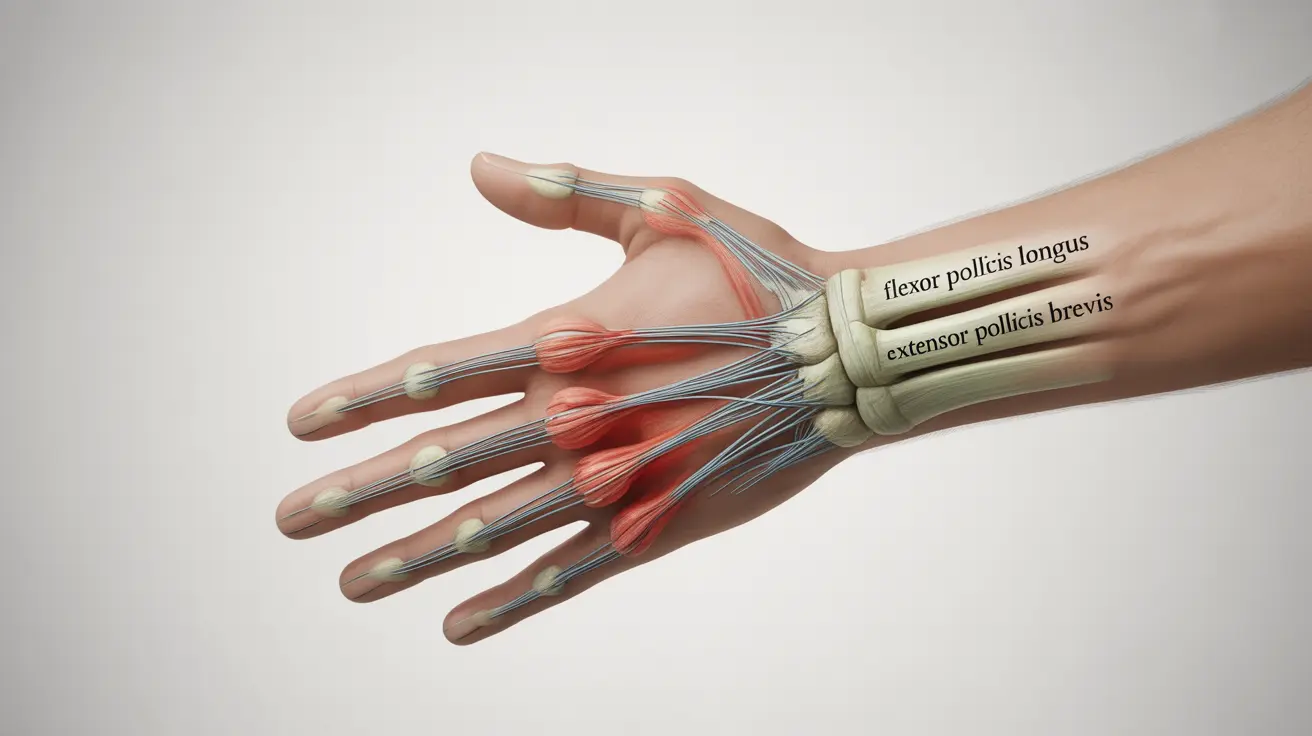Mommy's thumb, medically known as De Quervain's tenosynovitis, is a painful condition that commonly affects new parents and caregivers. This condition occurs when the tendons connecting the thumb to the wrist become inflamed and irritated, often due to repetitive movements associated with lifting and caring for infants.
While the name suggests it primarily affects mothers, this condition can impact anyone who performs repetitive hand and thumb movements. Understanding its causes, symptoms, and treatment options is crucial for both prevention and management.
Understanding Mommy's Thumb
Mommy's thumb develops when the two tendons that control thumb movement become inflamed within their protective sheath. This inflammation typically results from overuse and repetitive motions, particularly those involved in lifting and holding babies, such as repeatedly picking up an infant under the arms.
Common Causes and Risk Factors
Several factors can contribute to the development of mommy's thumb:
- Repetitive lifting of infants or heavy objects
- Pregnancy and hormonal changes
- Prolonged smartphone use
- Activities requiring repetitive hand movements
- Genetic predisposition
- Previous wrist or thumb injuries
Recognizing the Symptoms
Early recognition of symptoms can lead to more effective treatment and faster recovery. Key indicators include:
- Sharp pain at the base of the thumb
- Swelling near the thumb's base
- Difficulty gripping or pinching objects
- Pain that extends up the forearm
- Stiffness in thumb movement
- Catching or snapping sensation when moving the thumb
Treatment Approaches
Conservative Management
Initial treatment typically focuses on non-invasive approaches:
- Rest and activity modification
- Ice therapy for pain relief
- Thumb splinting or bracing
- Over-the-counter anti-inflammatory medications
- Gentle stretching exercises
- Ergonomic adjustments to daily activities
Medical Interventions
When conservative treatments aren't sufficient, medical professionals may recommend:
- Physical therapy sessions
- Corticosteroid injections
- Occupational therapy
- In rare cases, surgical intervention
Prevention Strategies
Preventing mommy's thumb involves implementing proper body mechanics and protective measures:
- Using proper lifting techniques
- Alternating arms when holding babies
- Taking regular breaks during repetitive activities
- Performing hand and wrist exercises
- Using supportive equipment when necessary
- Maintaining good posture during childcare activities
Frequently Asked Questions
What are the symptoms of mommy's thumb, and how is it diagnosed?
Mommy's thumb is typically diagnosed through physical examination and patient history. Key symptoms include pain at the thumb base, difficulty gripping, and swelling. Doctors may perform the Finkelstein test, where bending the thumb across the palm while flexing the wrist causes pain, confirming the diagnosis.
How is mommy's thumb treated, and what are the most effective management options?
The most effective treatments include a combination of rest, splinting, ice therapy, and anti-inflammatory medications. Physical therapy and ergonomic modifications often prove beneficial. In persistent cases, corticosteroid injections may be recommended, with surgery reserved for severe cases that don't respond to conservative treatment.
Can repetitive activities like typing or gardening cause mommy's thumb, and how can I prevent it?
Yes, any repetitive activity involving the thumb and wrist can potentially cause mommy's thumb. Prevention includes taking regular breaks, using ergonomic tools, maintaining proper form, and performing stretching exercises. Additionally, using supportive equipment and modifying techniques can help reduce strain.
What are the benefits and risks of corticosteroid injections for treating mommy's thumb?
Corticosteroid injections can provide significant pain relief and reduce inflammation quickly. However, risks include temporary pain at the injection site, skin discoloration, and potential tendon weakening if multiple injections are administered. These injections should be limited and used as part of a comprehensive treatment plan.
How can I reduce the risk of developing mommy's thumb during pregnancy or postpartum?
During pregnancy and postpartum periods, focus on proper lifting techniques, use supportive equipment like nursing pillows, alternate arms when holding the baby, and take regular breaks. Wearing a thumb splint preventively during high-risk activities and maintaining proper posture can also help reduce the risk.




